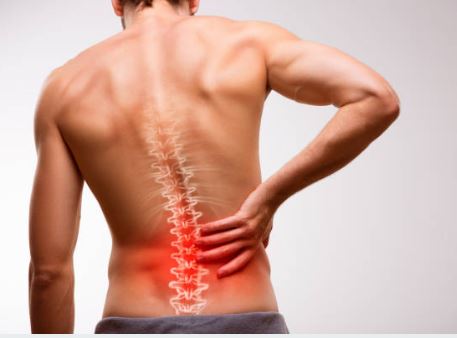Back pain is a common problem that can range from a mild, intermittent ache to severe, chronic pain. It can be caused by a variety of factors, including muscle strain, poor posture.
Fortunately, measures can help prevent or relieve most back pain episodes, especially for people younger than age 60. If prevention fails, simple home treatment and using the body correctly often will heal the back within a few weeks. Surgery is rarely needed to treat back pain

Symptoms
Back pain can range from a muscle aching to a shooting, burning or stabbing sensation. Also, the pain can radiate down a leg. Bending, twisting, lifting, standing or walking can make it worse.
When to see a doctor
Most back pain gradually improves with home treatment and self-care, usually within a few weeks. Contact your health care provider for back pain that:
- Lasts longer than a few weeks
- Is severe and doesn’t improve with rest
- Spreads down one or both legs, especially if the pain goes below the knee
- Causes weakness, numbness or tingling in one or both legs
- Is paired with unexplained weight loss
In rare cases, back pain can signal a serious medical problem. Seek immediate care for back pain that:
- Causes new bowel or bladder problems
- Is accompanied by a fever
- Follows a fall, blow to the back or other injury
- Causes
- Low back pain caused by spinal degeneration and injury.
- Click here for an infographic to learn more
- Back pain often develops without a cause that shows up in a test or imaging study. Conditions commonly linked to back pain include:
- Muscle or ligament strain. Repeated heavy lifting or a sudden awkward movement can strain back muscles and spinal ligaments. For people in poor physical condition, constant strain on the back can cause painful muscle spasms.
- Bulging or ruptured disks. Disks act as cushions between the bones in the spine. The soft material inside a disk can bulge or rupture and press on a nerve. However, a bulging or ruptured disk might not cause back pain. Disk disease is often found on spine X-rays, CT scans or MRIs done for another reason.
- Arthritis. Osteoarthritis can affect the lower back. In some cases, arthritis in the spine can lead to a narrowing of the space around the spinal cord, a condition called spinal stenosis.
- Osteoporosis. The spine’s vertebrae can develop painful breaks if the bones become porous and brittle.

